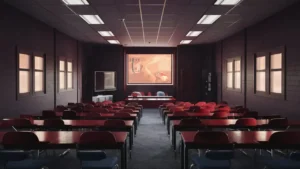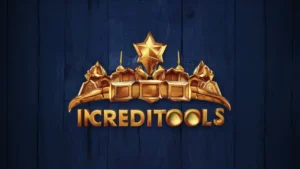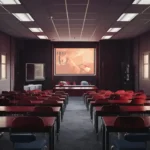Imagine transforming a simple dot-to-dot puzzle into a gateway for understanding robotics and technology. “Robots Dot to Dot Nattapong” exemplifies this innovative fusion, blending traditional dot-to-dot activities with modern robotics education.
This approach fosters creativity, enhances learning, and bridges the gap between art and technology.
The Evolution of Dot-to-Dot Art
Historical Context
Dot-to-dot puzzles have long been a staple in educational activities, primarily aimed at helping children develop counting skills and hand-eye coordination. These simple exercises involved connecting numbered dots to reveal basic images, such as animals or everyday objects.
Modern Transformation
With advancements in digital art and technology, dot-to-dot puzzles have evolved into intricate designs that appeal to all age groups. Artists like Nattapong have reimagined these puzzles, incorporating complex robotic figures that challenge traditional perceptions and engage users in a more intellectually stimulating experience.
Understanding Robots Dot to Dot Nattapong
Concept Explanation
“Robots Dot to Dot Nattapong” refers to a series of dot-to-dot puzzles created by the artist Nattapong, featuring detailed robotic designs. These puzzles merge the simplicity of dot-to-dot activities with the complexity of robotic art, offering an engaging way to explore both creativity and technological concepts.
Educational Objectives
Engaging with these puzzles serves multiple educational purposes:
- Introduction to Robotics: Provides a foundational understanding of robotic structures and design.
- Enhancement of Problem-Solving Skills: Challenges users to think critically as they navigate complex dot sequences.
- Promotion of STEM Learning: Encourages interest in science, technology, engineering, and mathematics through interactive art.
Educational Benefits
Cognitive Skill Development
Completing intricate dot-to-dot puzzles requires concentration and logical reasoning, thereby improving critical thinking skills. Users must follow sequences accurately, fostering attention to detail and systematic problem-solving abilities.
Fine Motor Skills Enhancement
The precise movements needed to connect dots aid in developing fine motor skills. This practice is particularly beneficial for young learners, as it enhances hand-eye coordination and dexterity.
Spatial Awareness
Visualizing and completing robotic images helps users understand spatial relationships and geometric concepts. This spatial awareness is crucial in fields like engineering and architecture.
Creativity and Imagination
While the puzzles provide a structured outline, users are encouraged to add personal touches, such as colors or additional details, fostering creative expression and imagination.
Practical Applications in Education
Classroom Integration
Educators can incorporate “Robots Dot to Dot Nattapong” puzzles into their curriculum to make learning interactive. These activities can be used in art classes to teach design principles or in technology courses to introduce basic robotics concepts.
Age Appropriateness
The puzzles vary in complexity, making them suitable for different age groups:
- Young Children: Simpler designs with fewer dots to develop basic skills.
- Older Students: Complex patterns that challenge and engage advanced learners.
Cross-Disciplinary Learning
These activities offer opportunities to blend various subjects:
- Art and Design: Understanding aesthetics and visual composition.
- Mathematics: Exploring geometric shapes and spatial reasoning.
- Technology: Introducing concepts of robotics and engineering.
Artistic and Technical Aspects
Design Process
Nattapong’s creative process involves several steps:
- Conceptualization: Drawing inspiration from existing robotic technologies and science fiction.
- Sketching: Creating a basic outline of the robot with geometric symmetry.
- Dot Placement: Strategically numbering and placing dots to balance complexity and solvability.
- Detailing: Adding elements like gears and LED-like features to animate the design. National Magazine
Aesthetic Appeal
The visual elements of these puzzles are carefully crafted:
- Balance and Symmetry: Ensuring the robot designs are proportionate and harmonious.
- Negative Space: Utilizing empty spaces to highlight the robot and create depth.
- Line Simplicity: Employing smooth lines and minimalistic details to focus attention on the robot’s form.
Technical Specifications
Creating these puzzles involves both traditional and digital tools:
- Software: Specialized programs assist in converting sketches into dot-to-dot formats.
- Manual Techniques: Hand-drawing initial concepts to retain artistic authenticity.
Getting Started with Robots Dot to Dot Nattapong
Selecting Appropriate Puzzles
Beginners should start with simpler designs and gradually progress to more complex ones. This approach builds confidence and skill.
Tools and Materials Needed
- Ruler: For drawing straight lines between dots.
- Quality Paper: To ensure durability, especially if coloring is involved.
- Pencils and Erasers: Allowing for adjustments and corrections.
Step-by-Step Guide
- Preparation: Gather all necessary materials.
- Starting Point: Identify and begin with the first numbered dot.
- Connecting Dots: Draw lines sequentially, ensuring accuracy.
- Review: Check for any missed connections or errors.
- Enhancement: Add colors

I’m Dariel Campbell, the expert in charge of pun-filled escapades at “Haha Puns,” the punniest place on the internet! Playing with words and delivering puns is my thing. At Haha Puns, we’re here to make your online experience full of giggles. Let’s turn your virtual adventures into a pun paradise—come and join the laughter at Haha Puns!











